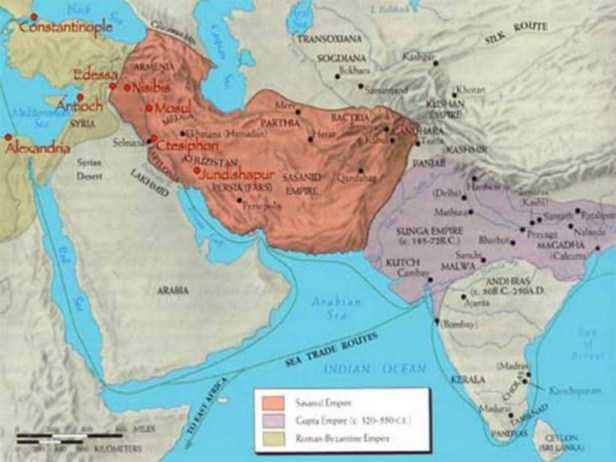 |
Jundishapur became the major site for the translation of Greek and
Hellenistic manuscripts, first from Greek into Syriac, and then from Syriac
into Arabic, which was the official language of the Moslem world. The
Nestorians continued their translating efforts and welcomed into their
scholarly community the leading figures from the Greek neo‑Platonic schools
in Athens, who had been driven out of Athens when their institutions had
been closed by the Eastern Church in 529 A.D. Along with these 2 groups of
scholars, Jundishapur also attracted many of the leading Jewish
intellectuals who were fluent in a variety of languages, as well as many
learned men from China and India, who were drawn to Jundishapur by the wide
ranging travels of the Nestorian missionaries.
|
